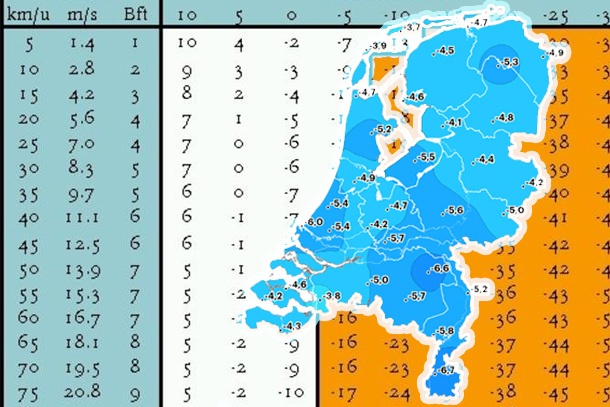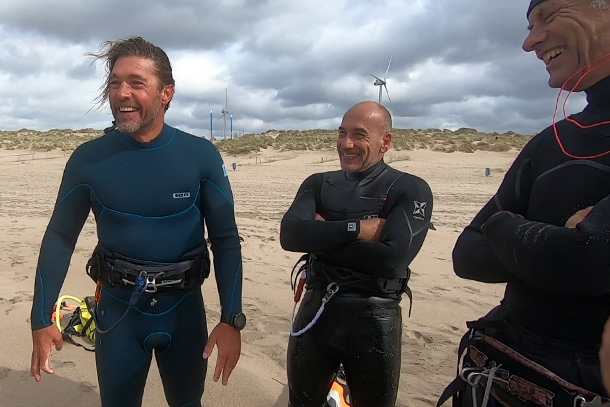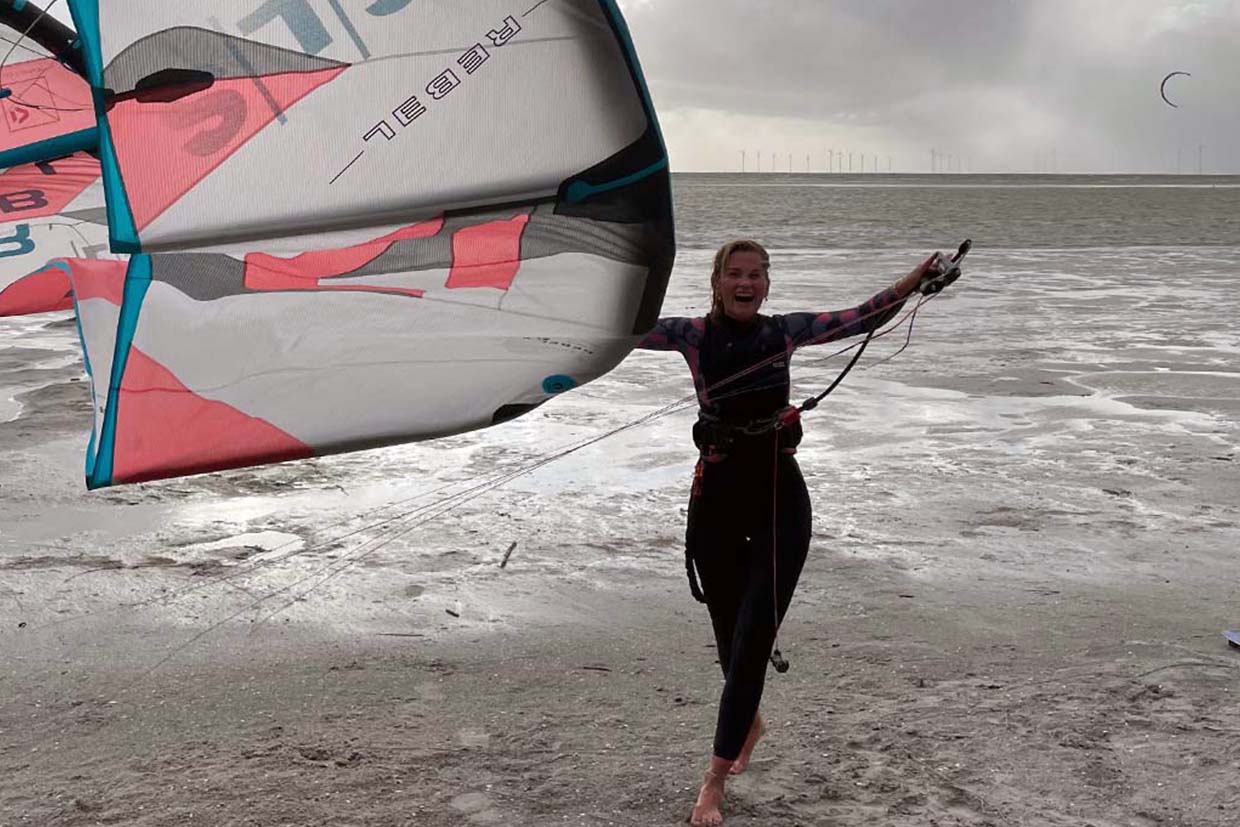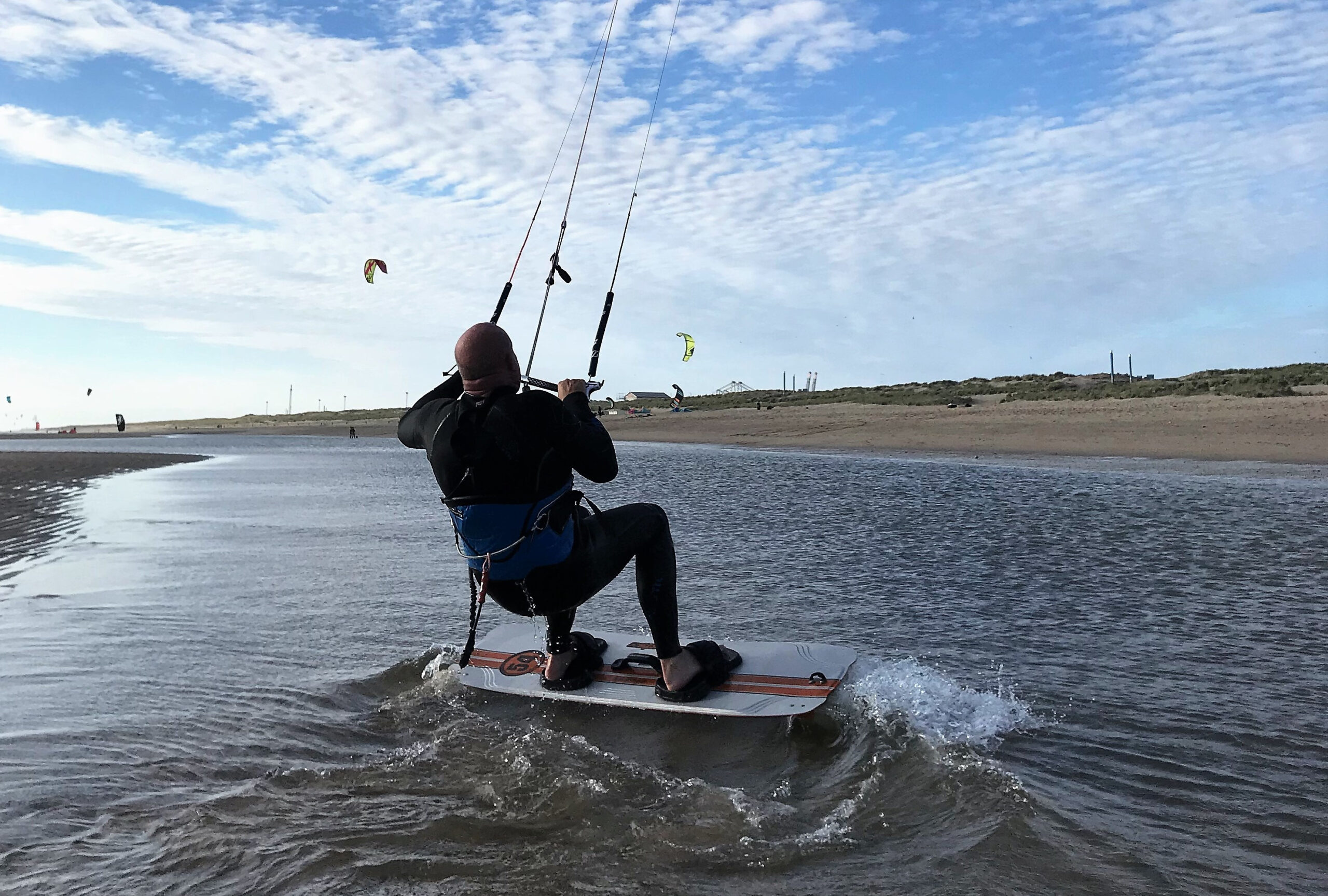You probably recognize it in the winter months. Sometimes it's January and it doesn't feel that cold at all, while less than a week later with the same temperature, it feels freezing. Then we haven't even talked about the temperature of the sea water and inland water. To be clear: inland water becomes even colder than seawater in winter and in the Netherlands it can even cool down to 1 or 2 degrees and become frozen. In this blog we discuss the so-called windchill factor, you can calculate the perceived temperature yourself and we link to the current perceived temperature for viewing.
Feeling temperature today
No need to delve further because you want to immediately view the perceived temperature of today or tomorrow? Which can. Then view the immediate current perceived temperature Buienradar.nl or via the special references on our weather and wind page.
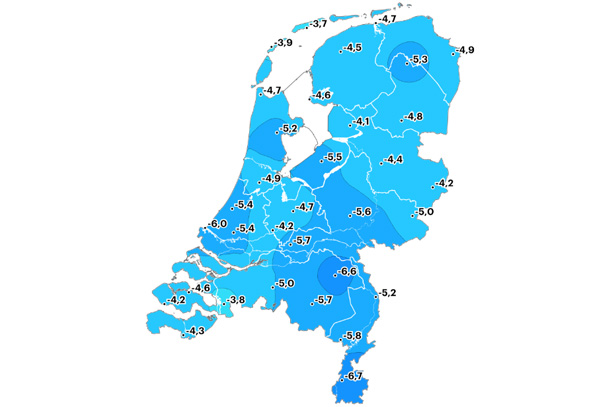
Calculate the perceived temperature
To give you insight into how cold it is when you combine wind and temperature, there is the wind chill factor. There are various measuring methods aimed at measuring the difference between the measured air temperature and the perceived temperature. Rain radar uses the JAG/TI method to calculate this temperature. This calculation applies to temperatures lower than 10 degrees.
The perceived temperature is calculated based on the measured temperature and wind speed. After all, the colder it is and the harder the wind blows, the colder it feels.
During polar expeditions, the wind chill factor is used as a measure of additional heat loss and the number of layers of clothing worn. You can calculate the perceived temperature yourself using the table below.
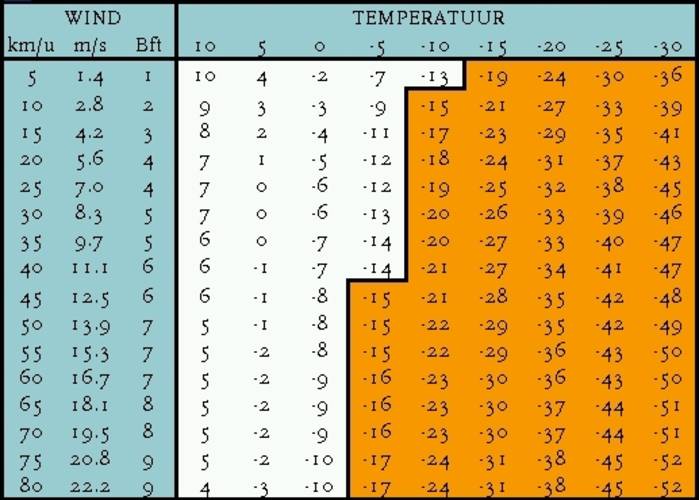
Wind chill water sports
Risk of frozen skin
As you read, the perceived temperature at 6 Beafort and 5 degrees is already -1. At a lower perceived temperature you run the risk of frostbite on the skin. The perceived temperature is then much more important than the outside temperature.
This is how freezing works
When the wind blows, the heat from your body is dissipated more quickly and your skin cools down faster. This means your skin can freeze more quickly. Covering the skin is therefore extremely important in such weather. Keeping the skin oily can also help against dry skin. However, it does not prevent frostbite or hypothermia.
Hypothermia is lurking
Hypothermia can occur at different temperatures depending on the length of time you are outside. Of course, hypothermia occurs more quickly at a lower perceived temperature. Apart from the windchill factor, water sports enthusiasts also have to deal with the water temperature and you cool down faster in the water than on dry land. For example, consider the water temperature in winter. The average water temperature in February is about 4,5 degrees. Hypothermia can then quickly occur. Can you imagine how quickly this can happen in combination with a perceived temperature of -10 degrees? Once hypothermia occurs, a person quickly becomes incapacitated and every minute counts.
Good preparation required
That is why water sports enthusiasts who are active on and in the water prepare very well for the cold and deal even more consciously with the risks of hypothermia in the cold months. We specifically discuss this in the blogs mentioned below.
Also watch: safety on the water, safety tips for kitesurfing in winter en choose the right quality and thickness wetsuit.


